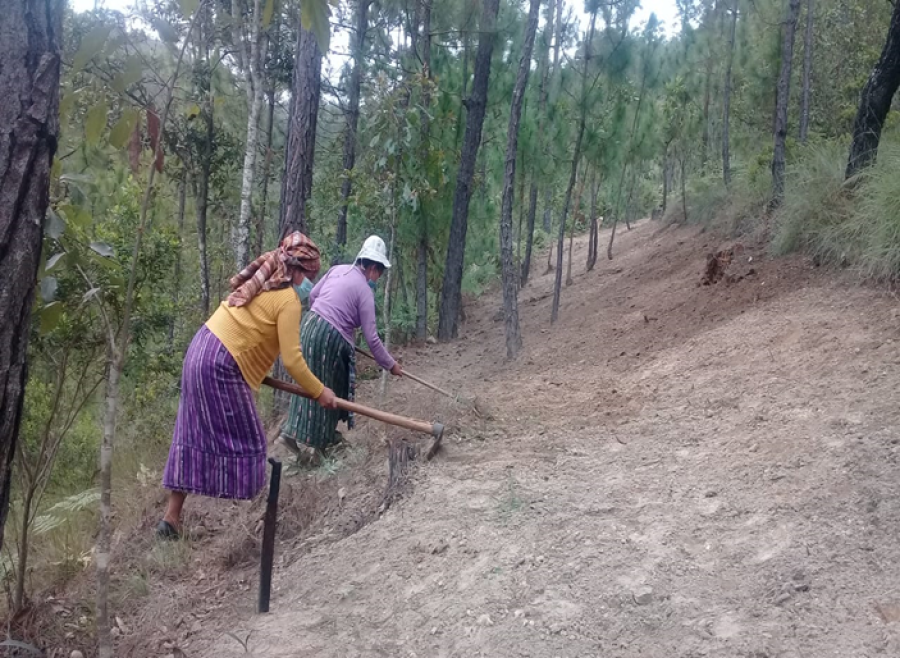
Cultural Survival condemns the irregular export of Mayan archaeological pieces by the government of Guatemala. The export had the stated purpose of restoring and exhibiting these items at the Metropolitan Museum of Art (MET) in New York City. We also condemn Bill No. 59-23 on the Rescue of Pre-Hispanic Heritage, which says that it intends to restore, protect and preserve archaeological sites together with private initiatives. In the implementation of both actions, Free, Prior and Informed Consent of Indigenous Peoples was not sought.
On August 18, 2021, archaeological pieces Maya Throne I and Dintel III, belonging to the Piedras Negras archaeological center in Guatemala and considered masterpieces of Classic Maya art were transferred to the MET in an irregular and contradictory manner. Despite being legally prohibited, the items were exported under the premise of being subjected to a process of technical and scientific documentation with advanced technology for their conservation and improvement of their presentation, since the Guatemalan government argued Guatemala does not have the technology the MET possesses for restoration. This restoration work has consisted of removing thick layers of dust, filling gaps with plaster filaments, and conducting a contactless laser cleaning to restore its pink color. However, these objects belong to the Maya People, not to the Guatemalan government, and this decision was made without the Maya Peoples’ consent.
The pieces that were taken from the country are sacred to the Maya Peoples because they are fundamental to their historical memory and identity, as well as necessary for their spirituality. Members of the Plataforma de Cultura Milenaria Maya (Platform of the Ancient Maya Culture) and the Colectivo Guatemalteco para la Defensa del Patrimonio (Guatemalan Collective for the Defense of Patrimony) have manifested their opposition to the export of these sacred items. In an open letter to the Guatemalan Minister of Culture and Sports, Fernando Amado Aguilar Marroquín, they denounce the twisting of the laws at the government’s convenience and demand the return of their sacred pieces so that they may be placed safely in the National Museum of Archeology and Ethnology.
Both pieces were supposed to have been returned to their place of origin on October 30, 2022 but to date, this has not happened. On the contrary, these will be exhibited together with Stela 24 of the Naranjo-Sa'al, carved in honor of Wak Chanil Ajau, the "Queen Six Heaven," which has been part of the exhibition "Lives of the Gods: Divinity in Maya Art'' since September 2, 2021. They will remain on display until April 2023, as part of what the Guatemalan government says is its strategy to "promote the richness of the Maya culture to the world."
Around the same time these sacred Mayan artifacts were being exported, the Commission of Culture and Sports decided to file Bill No. 59-23 on the Rescue of Pre-Hispanic Heritage, which states that it intends to restore, protect and preserve archaeological sites together with private initiatives. Again, this bill was drafted without the consultation or Free, Prior and Informed Consent of Indigenous Peoples. Various Mayan organizations and collectives have spoken out against this bill, which is considered racist and exclusionary since it "would usurp and privatize the ceremonial centers of the Mayan Peoples and their sacred sites throughout the Guatemalan territory, stripping them of their spiritual practices and violating their right to freedom of religious belief."
We urge the government of Guatemala to consult with Indigenous Peoples on decisions that directly and indirectly jeopardize their cultural rights and identities and to respect their right to Free, Prior and Informed Consent as prescribed by the United Nations Declaration on the Rights of Indigenous Peoples and other international human rights instruments.
Cultural Survival supports the Ajq'ijab' Collectives and other organizations, as well as Indigenous Peoples in general, in their struggle for the rematriation and defense of their sacred objects and territories. The cultural and natural heritage of Indigenous Peoples is not for sale!
Top photo: Throne 1 of Piedras Negras, Petén. Photo by Erik Törner.


